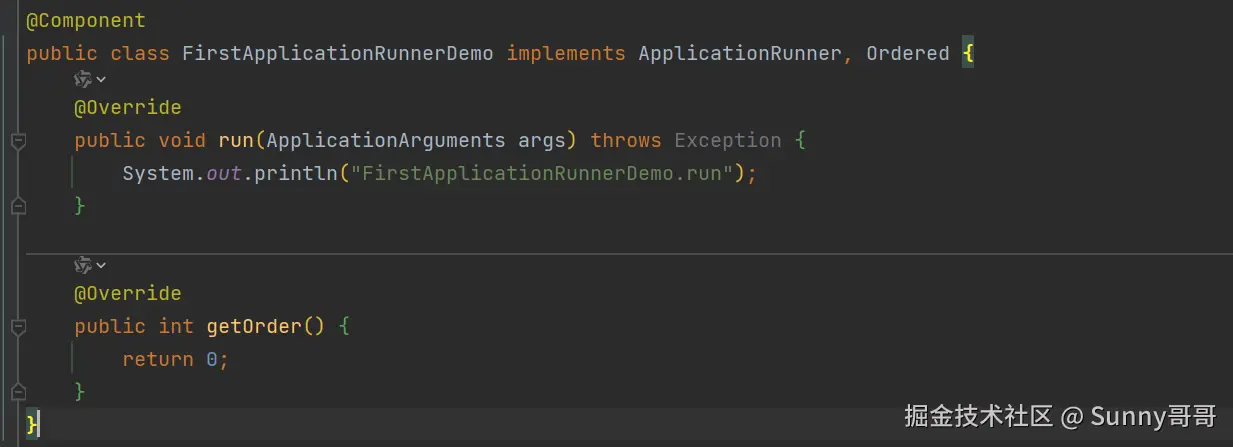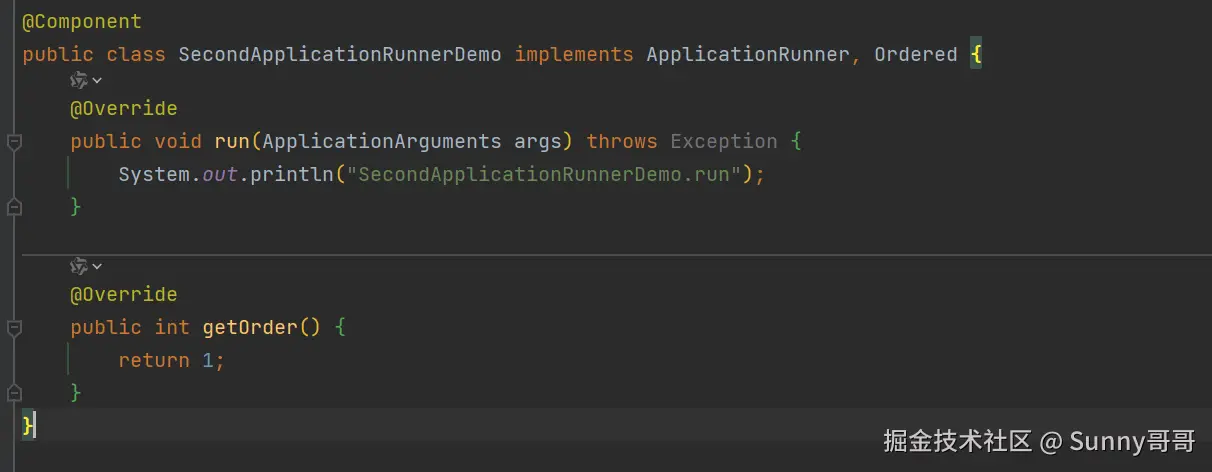一、前言
平常开发中有可能需要实现在项目启动后执行的功能,Springboot中的ApplicationRunner和CommandLineRunner接口都能够帮我们很好地完成这种事情。它们的主要作用是在应用启动后执行一段初始化或任务逻辑,常见于一些启动任务,例如加载数据、验证配置等等。今天我们就来聊聊这两个接口在实际开发中是怎么使用的。
二、使用方式
我们直接看示例代码:
java
@Component
public class CommandLineRunnerDemo implements CommandLineRunner {
@Override
public void run(String... args) throws Exception {
//执行特定的代码
System.out.println("执行特定的代码");
}
}
java
@Component
public class ApplicationRunnerDemo implements ApplicationRunner {
@Override
public void run(ApplicationArguments args) throws Exception {
System.out.println("ApplicationRunnerDemo.run");
}
}从源码上分析,CommandLineRunner与ApplicationRunner两者之间只有run()方法的参数不一样而已。CommandLineRunner#run()方法的参数是启动SpringBoot应用程序main方法的参数列表,而ApplicationRunner#run()方法的参数则是ApplicationArguments对象。
如果我们有多个类实现CommandLineRunner或ApplicationRunner接口,可以通过Ordered接口控制执行顺序。下面以ApplicationRunner接口为例子:


直接启动看效果:

可以看到order值越小,越先被执行。
传递参数
Spring Boot应用启动时是可以接受参数的,这些参数通过命令行 java -jar app.jar 来传递。CommandLineRunner会原封不动照单全收这些参数,这些参数也可以封装到ApplicationArguments对象中供ApplicationRunner调用。下面我们来看一下ApplicationArguments的相关方法:
-
getSourceArgs()被传递给应用程序的原始参数,返回这些参数的字符串数组。 -
getOptionNames()获取选项名称的Set字符串集合。如--spring.profiles.active=dev --debug将返回["spring.profiles.active","debug"]。 -
getOptionValues(String name)通过名称来获取该名称对应的选项值。如--config=dev --config=test将返回["dev","eat"]。 -
containsOption(String name)用来判断是否包含某个选项的名称。 -
getNonOptionArgs()用来获取所有的无选项参数。
三、总结
CommandLineRunner 和 ApplicationRunner 常用于应用启动后的初始化任务或一次性任务执行。它们允许你在 Spring 应用启动完成后立即执行一些逻辑。ApplicationRunner 更适合需要处理命令行参数的场景,而 CommandLineRunner 更简单直接。